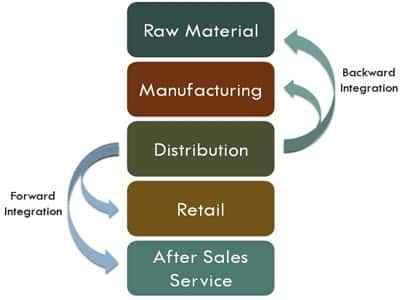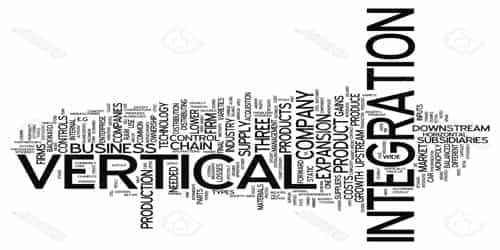Vertical integration: When a company expands its business into areas that are at different points on the same production path, such as when a manufacturer owns its supplier and/or distributor then it’s known as vertical integration. It is a strategy where a firm acquires business operations within the same production vertical. It is when a company controls more than one stage of the supply chain. Vertical integration can help companies reduce costs and improve efficiency by decreasing transportation expenses and reducing turnaround time, among other advantages. However, sometimes it is more effective for a company to rely on the expertise and economies of scale of other vendors rather than be vertically integrated. It can help companies reduce costs and improve efficiencies by decreasing transportation expenses and reducing turnaround time, among other advantages.
Vertical integration is an arrangement in which the supply chain of a company is owned by that company. Because it can have a significant impact on a business unit’s position in its industry with respect to cost, differentiation, and other strategic issues, the vertical scope of the firm is an important consideration in corporate strategy.

Fig: Vertical Integration types
Two types:
Forward integration is a strategy where a firm gains ownership or increased control over its previous customers (distributors or retailers).
Backward integration is a strategy where a firm gains ownership or increased control over its previous suppliers.















